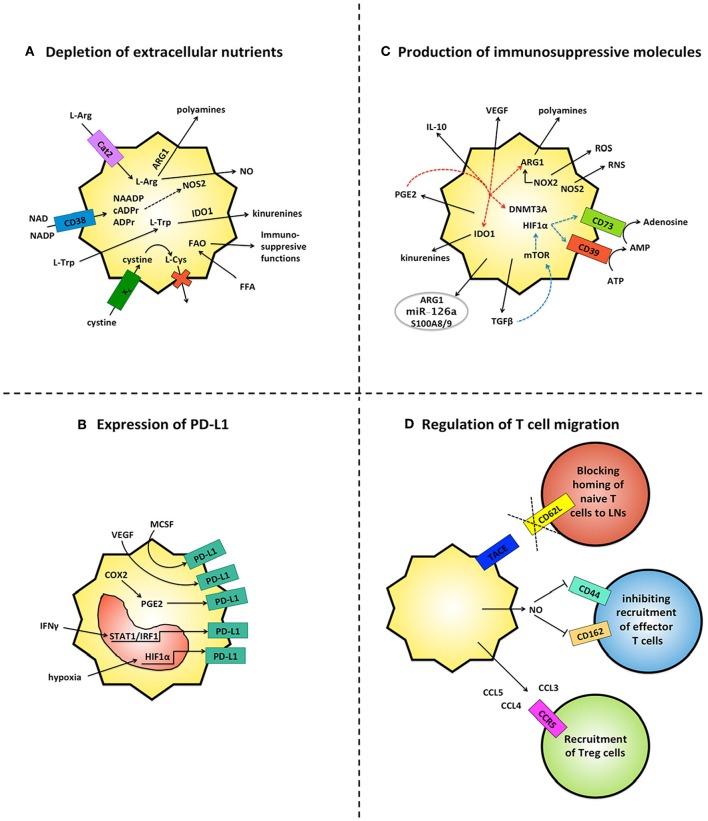Figure 1.
MDSCs inhibit immune responses by multiple mechanisms. (A) MDSCs deplete the extracellular microenvironment of essential nutrients for T cells. Through the up-regulation of metabolic enzymes (e.g. ARG1, NOS2, IDO1) and ectoenzymes (e.g. CD38) MDSCs consume copious amounts of amino acids (L-Arg, L-Trp) and NAD, and concomitantly produce molecules endowed with immunomodulatory activities (e.g. nitric oxide/NO, polyamines and kinurenines). Further, MDSCs internalize cystine without releasing the oxidized L-Cys and up-take of FFA, which fuels FAO and expression of immunosuppressive activities. (B) MDSCs up-regulate PD-L1 in response to multiple microenvironmental signals, including hypoxia via HIF1α, IFNγ via STAT1/IRF1, MCSF and VEGF via unknown mechanisms. Up-regulation of COX2 and PGE2 are also found associated with PD-L1 expression. (C) MDSCs release a range of immunosuppressive soluble molecules. They produce ROS and RNS through NOX-2 and NOS2, adenosine via CD39 and CD73, kinurenines via IDO1, polyamines via ARG1, anti-inflammatory cytokines (IL-10, TGFβ) and PGE2. Both TGFβ (blue lines) and PGE2 (red lines) also create autocrine loops that sustain the production of additional suppressive molecules. TGFβ induces the ectoenzymes CD39 and CD73 via HIF-1 α and PGE2 promotes expression of immunosuppressive molecules (IDO1, IL-10, ARG1 and VEGF) as well as repression of immunogenic-associated genes via DNMT3A. MDSCs also secrete exosomes which contain different molecules, such as immunosuppressive ARG1, inflammatory S100A8/9 and the oncogenic miR-126a. (D) MDSCs modulate T cell trafficking. They limit homing of naïve T cells to LNs by TACE-mediated cleavage of CD62L on T cells and they impair extravasation of effector T cells through NO-mediated down-regulation of adhesion molecules CD162 and CD44. In contrast MDSCs support the recruitment of CCR5+ Treg cells by production of CCL3, CCL4, CCL5.

